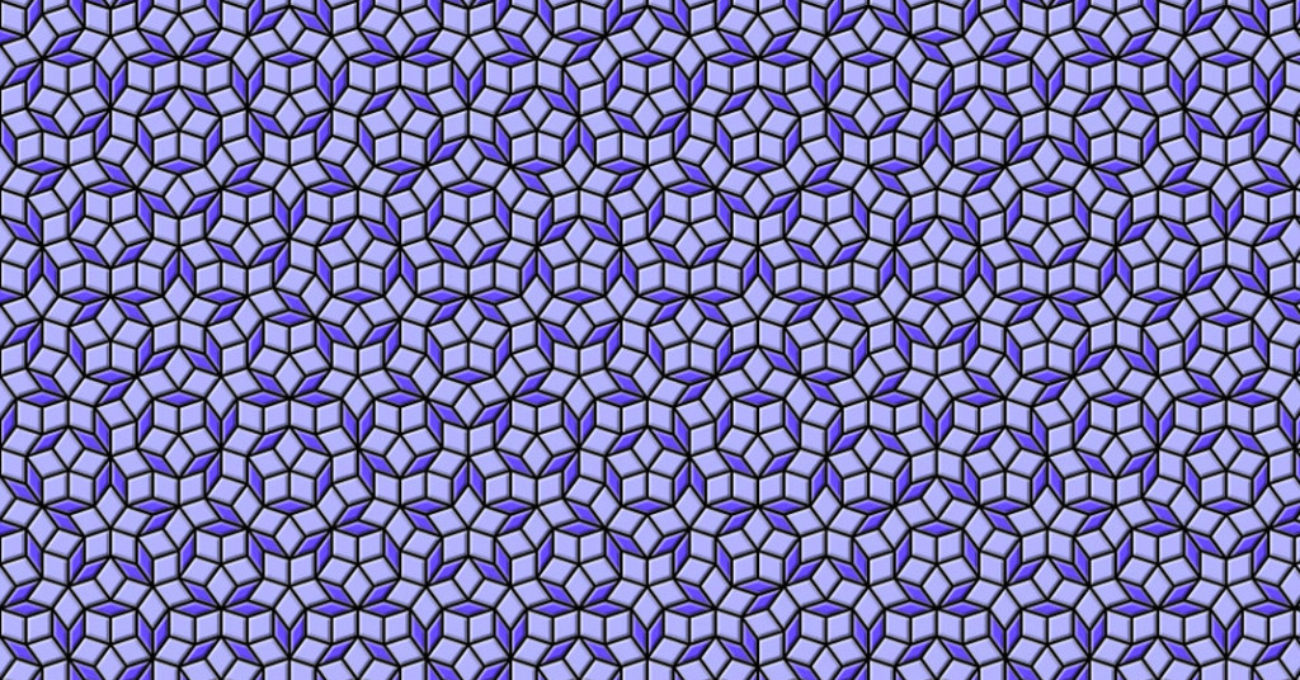Impossible Cookware and Other Triumphs of the Penrose Tile
(Nautilus Magazine)
In 1974, Roger Penrose, a British mathematician, created a revolutionary set of tiles that could be used to cover an infinite plane in a pattern that never repeats. In 1982, Daniel Shechtman, an Israeli crystallographer, discovered a metallic alloy whose atoms were organized unlike anything ever observed in materials science.
Penrose garnered public renown on a scale rarely seen in mathematics. Shechtman won the Nobel Prize. Both scientists defied human intuition and changed our basic understanding of nature’s design, revealing how infinite variation could emerge within a highly ordered environment.
At the heart of their breakthroughs is “forbidden symmetry,” so-called because it flies in the face of a deeply ingrained association between symmetry and repetition. Symmetry is based on axes of reflection—whatever appears on one side of a line is duplicated on the other. In math, that relationship is reflected in tiling patterns. Symmetrical shapes such as rectangles and triangles can cover a plane with neither gap nor overlap, and in an ever-repeating pattern. Repeated patterns are called “periodic” and are said to have “translational symmetry.” If you move a pattern from place to place, it looks the same.
